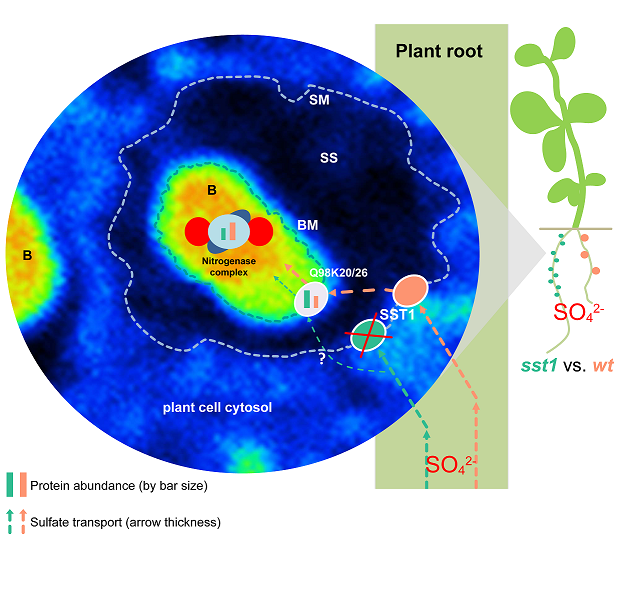W 1257-820
Microbial Nitrogen Cycling
Subproject: The role of the sulfate transporter SST1 on N-fixation of Lotus japonicus| Project number W 1257-820 |
Microbial Nitrogen Cycling Subproject: The role of the sulfate transporter SST1 on N-fixation of Lotus japonicus |
|
| |
|
Final Report
Legume−rhizobia (root bacteria) symbioses play a major role in food production for an ever growing human population. In this symbiosis, dinitrogen is reduced (“fixed“) to ammonia by the rhizobial nitrogenase enzyme complex and is secreted to the plant host cells, whereas dicarboxylic acids derived from photosynthetically produced sucrose are transported
towards the bacterial symbionts and serve as respiratory substrates for the
them. This enables plants to grow in nitrogen (N)-deficient soils as N is the most important nutrient for plant growth.
Do the micro-symbionts take up the sulfate coming from the plant?
|
 The picture showes a cut-out image of a nodule cross-section with a sulfur containing micro-symbiont (orange-green colour).
The picture showes a cut-out image of a nodule cross-section with a sulfur containing micro-symbiont (orange-green colour).Figure taken from Sulfate is transported at significant rates through the symbiosome membrane and is crucial for nitrogenase biosynthesis S. Schneider, A.Schintlmeister,M. Becana, M. Wagner, D.Woebken, S. Wienkoop |
||||||||||||||||||||||||||||||||||||||||||||||||||||||||||||||||||||||||||||
|
|
With support from |
  |